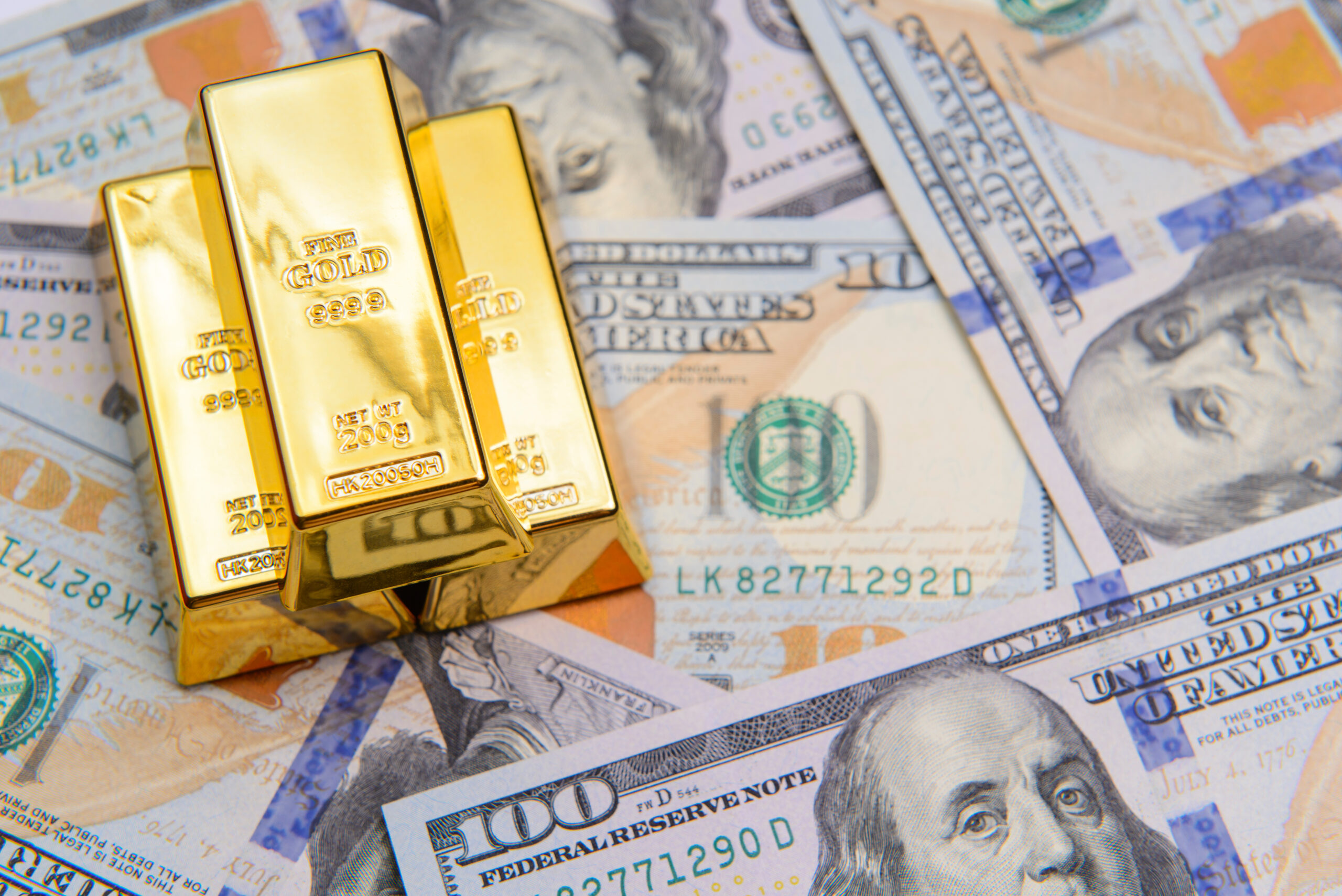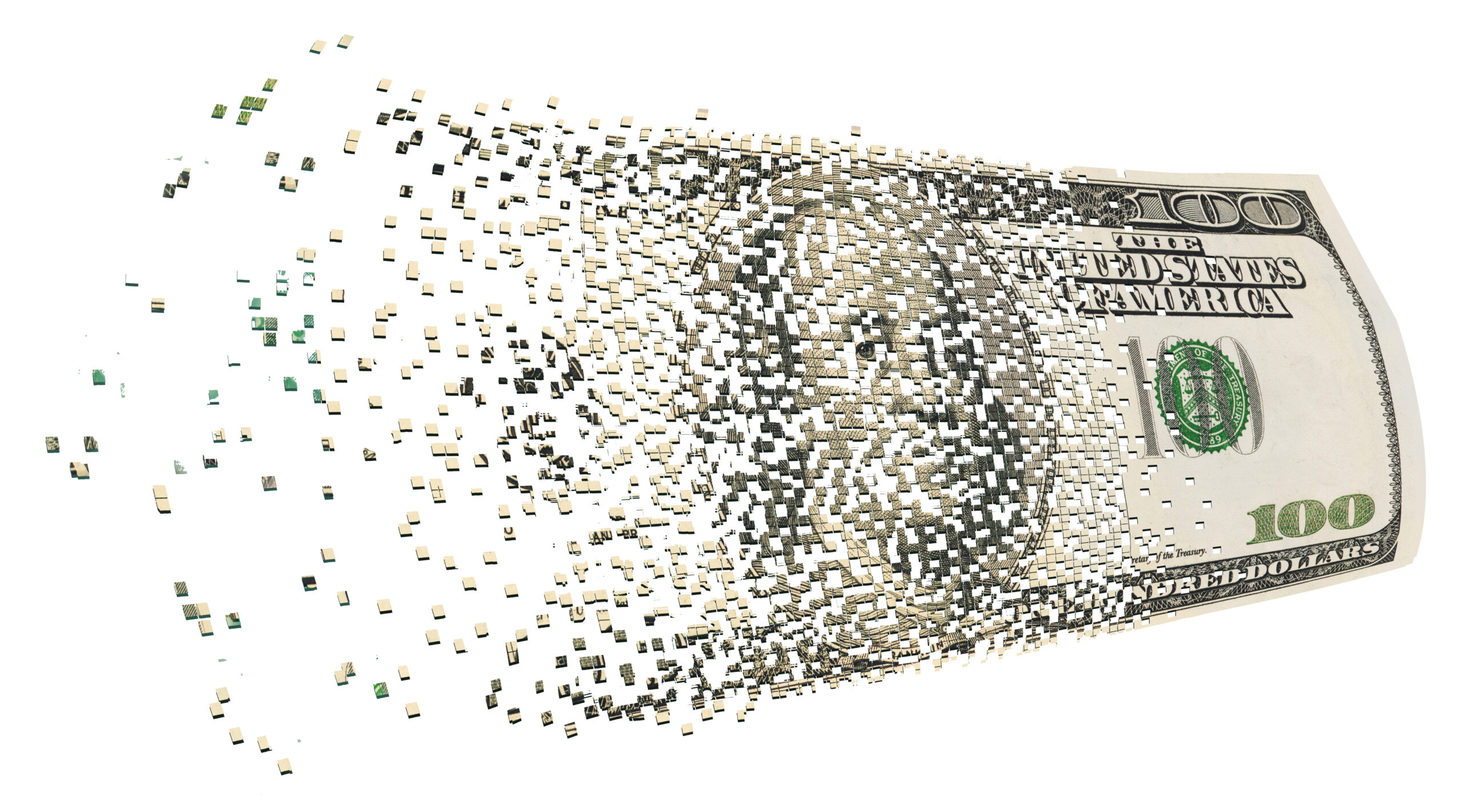At the end of the Second World War, the leaders of 44 nations, including the allies, gathered at Bretton Woods in New Hampshire, US and a new international monetary system was put into place. Delegates at the historic conference agreed to establish the International Monetary Fund and the World Bank Group. The system of currency convertibility that was agreed upon lasted until 1971, and it appointed the US dollar as the world’s principal reserve currency. It was pegged against gold at an exchangeable rate of $35 an ounce. This meant that central banks around the world would hold their foreign reserves in dollars only.
However, in 1971 the dollar was decoupled due to insufficient gold reserves held by the US making the dollar fiat money. Some years later on a visit to King Faisal of Saudi Arabia, then US Secretary of State, Henry Kissinger brought into being the petrodollar system. The United States agreed to provide military backing, and in exchange, the Organisation of the Petroleum Exporting Countries (OPEC) would trade oil globally in US dollars alone, creating an artificial demand – countries buying oil would need US dollars – putting the dollar at the top of the pile internationally.
However, in recent years events have been set in motion to topple the dollar’s hitherto undisputed place as the definitive global trade exchange medium.
Enter Russia: in 2021, Saudi Arabia signed an agreement on military cooperation with Russia and the US was no longer the only go-to for military protection. This year’s World Economic Forum, in Davos, Saudi Arabia’s Finance Minister, Mohammed Al-Jadaan stated that the country was open to trading in other currencies in addition to the US dollar – changing the norm of over five decades. The signals of de-dollarisation were emerging.
Does all this signal the beginning of the end for the almighty dollar? Possibly, as this was not all that happened this year…
New Money
There has been long-time resistance, internationally, to the US dollar being the only agreed about reserve currency. And recently the BRICS (Brazil, Russia, India, China and South Africa) bloc decided to do something about it. America’s sanctions against other developing countries being one of the many reasons that led to the nations of the BRICS countries deciding to cut ties with the US dollar. The alliance formed by these countries aims to nurture and streamline trade interactions within the bloc without the greenback. While their dollar dependency has not quite ended (and is unlikely to do so anytime soon) the first steps are looking promising for the BRICS countries. They are slowly divesting themselves of the dollar and putting forward their own currencies for the purposes of international trade. On August 14th, this year, India gave the directive to the Indian Oil Corporation to buy a million barrels of oil from the UAE using the Indian rupee to transact the deal with the Abu Dhabi National Oil Company. Saudi Arabia appears to be in agreement with this change in currency exchange matters, as well, and more and more countries will adopt this new way to trade if all goes to the BRICS plan. Increasing inflation in the US and other factors, also help make the case for a BRICS currency stronger.
Gold rush
The world has been lost in debate over whether or not the BRICS currency is going to be a gold-backed currency. At the 2022 BRICS summit, Russian President Vladimir Putin stated that the bloc was working to create an “international reserve currency”. This was the agenda for the 15th annual BRICS summit as well. There is talk that the BRICS currency will be gold-backed – bringing back the gold standard and, hopefully, stability to the new currency. That said, fluctuating gold prices may pose an impediment.
Certainly, central banks are stockpiling gold reserves. According to the IMF World Gold Council, the first two months of this year saw the largest purchases of gold from Singapore (51.4 tonnes), Türkiye (45.5 tonnes), China (39.8 tonnes), Russia (31.1 tonnes) and India (2.8 tonnes). It seems clear that BRICS countries are accumulating gold in preparation for their new currency. Meanwhile, it has been noted that there are less US dollars held by central banks according to data from the IMF Currency Composition of Official Foreign Exchange Reserves (COFER).
It looks like countries are prepping for a new international system.

Obstacle course
There is, of course, talk of increasing the reach of the bloc by including other countries. (Türkiye, among many others, has applied for BRICS membership). However, this would require aligning the interests of several nations under some sort of a common banner diplomatically, politically and culturally, and this will be both challenging and time-consuming. But the more the players, the better the strength of the currency and its acceptance globally. That said, even within the current bloc, the strained relations often seen between India and China may well prove to be a huge impediment to the successful rooting of BRICS as a currency, despite the fact that Russia is strongly in favour of seeing this new money initiative through. Brazilian President, Lula da Silva has also been vocal in his support of this idea as he questioned the role of the dollar in international trade. At a ceremony in Shanghai, he asked, “Who decided the dollar would be the world’s currency? Why can’t a bank like the BRICS Bank have a currency to finance trade between Brazil and other BRICS countries?” Pertinent questions and ones the world has been asking for a while.
Strength in numbers
BRICS nations today account for more than 40 percent of the world’s population and have an aggregate global GDP of 31.5 percent. This transcends the G7’s (United States, Canada, France, Germany, Italy, Japan and the United Kingdom) combined GDP of 30.7 per cent. It is more than possible that the BRICS nations can be entirely self-sufficient, trading among themselves without any reliance on the United States or Europe. China may well have this as their game plan, given the scope of its Belt and Road Initiative (BRI) – the largest infrastructure development project in history, aiming to connect Asia and Africa, Europe and South America. The United States has pointedly been excluded.
While China–India relations keep alternating between neutrality and aggression, both countries seem willing to periodically ally with each other, with India investing in the BRI on a proxy basis through the Asian Infrastructure Investment Bank, New Development Bank and Shanghai Cooperation Organisation. In addition, seven of the 13 OPEC countries have also joined or applied to join the BRICS, and all of them are involved in the BRI.

The dollar’s decline
The EU and the US have had, unsurprisingly, strong responses to this potential move to topple the dollar from its position. The US dollar and the euro are the two most widely traded currencies in the world and the BRICS, if successful, poses a threat to their international stability.
- There is likely to be a reduced demand for dollars and euros, if other currencies are accepted trade mediums, which would lead to a decline in the value of these two top currencies.
- The increased competition for the dollar and euro, with an alternative, universally accepted currency would lead to lower fees and better services for users of financial markets.
- The US would likely have less influence in international trade and potentially result in a more multipolar global financial system.
Both the US and the European Union, and a few financial institutions, have expressed their concern at the idea of the BRICS currency gaining strength. The veteran economist, Jim O Niell, who came up with the term BRIC (before South Africa joined the fray), pooh-poohed the idea of a BRICS currency in fairly strong and uncomplimentary terms. Right now things, while nebulous, seem to be causing alarm in higher political circles with similar strong responses from those with a vested interest in keeping the dollar strong. This includes India, which has hinted that it would not want to destabilise its trade relations with the West.
Seen from the other side, there are potential hurdles standing in the path of a common BRICS currency. The creation of a unified monetary policy remains a huge hurdle for BRICS, as the countries involved are all at different stages of economic development, with differing inflation rates, making a common standard very tough to implement. The bloc would also need to set in place a common payment and clearing system suited to the needs of all the countries, an expensive, and undoubtedly, time-consuming exercise.
For decades, the United States has been considered the global hegemon. However, it would appear that the process of de-dollarisation is occurring or, at the very least, taking its first faltering steps, but it is not something particularly new. The rise and fall of empires and reserve currencies have been a feature of human trade forever. From the Dutch Empire that imposed the guilder, to the British Empire and its pound sterling that held sway over 70 percent of the known world for well over a century, and now the empire of the US dollar…shifts in world order are as inevitable as the rising and setting of the sun… and we can only watch with interest for now to see what the sunset and sunrise bring.



